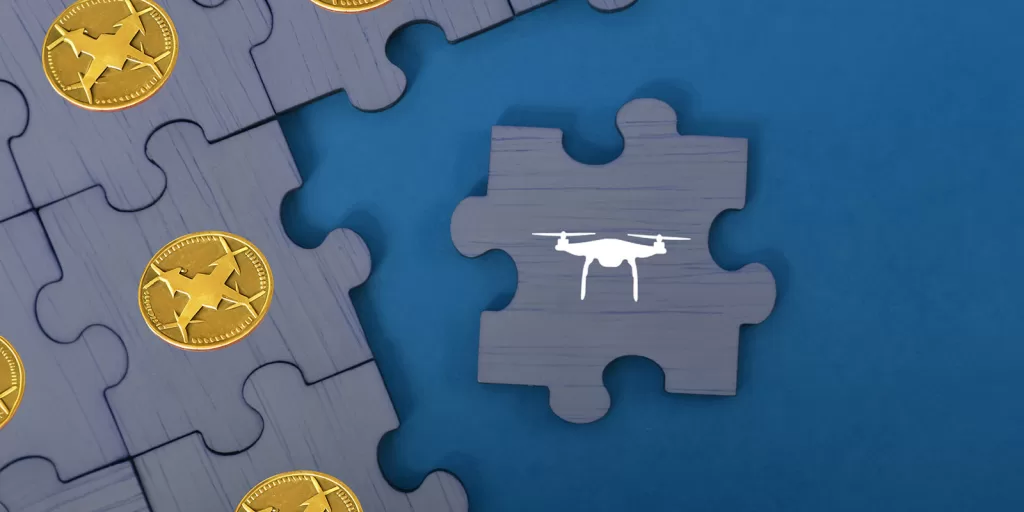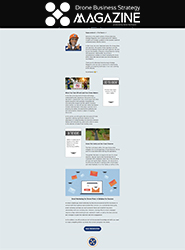
“Price is what you pay, value is what you get.” When pricing aerial drone services, commercial drone pilots should consider factors such as their operating costs, competition, the complexity of the project, the value they bring to their clients, and the overall market demand for their services. Additionally, they should factor in any additional expenses such as travel costs or specialized equipment rental fees. It’s important to find a balance between offering competitive rates while ensuring that the services provided are profitable.
Developing a pricing strategy is essential for commercial drone pilots because it helps them ensure that their services are profitable while remaining competitive in the market. By having a clear understanding of their operating costs and the value they provide to their clients, they can determine the appropriate rates to charge for their services. A well-developed pricing strategy can also help drone pilots win new clients by demonstrating the value they bring and by being transparent about the costs involved. Additionally, a pricing strategy allows drone pilots to make informed business decisions, such as whether to invest in new equipment or expand their services, by accurately assessing their profit margins. Overall, developing a pricing strategy is crucial for the success of a commercial drone pilot’s business.
Drone Pilot Pricing Factors

Here are essential steps a drone-pilot-for-hire should take to develop their pricing strategy:
- Define the scope of work: Determine what the project entails and the specific services required.
- Calculate operating costs: Determine the cost of equipment, insurance, and any other operational expenses.
- Evaluate the competition: Research the rates of other drone service providers in the area.
- Determine value proposition: Identify the unique benefits and value that your services bring to the client.
- Set pricing structure: Develop a pricing structure that is competitive, yet profitable.
- Determine additional fees: Consider additional expenses such as travel costs, special equipment rental fees, or any other fees that may be required.
- Test pricing strategy: Adjust and refine pricing strategy as necessary to optimize profits.
- Communicate pricing to clients: Provide transparent pricing to clients and ensure that they understand the costs and services provided.
STRATEGY CONSIDERATION: If you’re thinking about concealing your drone photography rates on your website and across different media platforms, I recommend holding off on your decision until you’ve taken into account the following insights regarding marketing and brand perception: “The Pitfalls of Keeping Drone Photography Prices Hidden.”
Drone Pilot’s Cost of Doing Business (CODB)
The cost of doing business (CODB) is the total cost that a commercial drone pilot incurs to operate their business. This includes all expenses associated with running the business, such as equipment costs, insurance, licensing, training, and any other operational costs.
It is essential for commercial drone pilots to accurately calculate their CODB because it directly impacts the profitability of their business. If a pilot underestimates their CODB, they may end up charging less for their services than is necessary to cover their costs and generate a profit. On the other hand, if a pilot overestimates their CODB, they may price their services too high and lose potential clients to competitors who offer more competitive rates.
To accurately calculate their CODB, commercial drone pilots need to account for all of their expenses and factor them into their pricing strategy. This requires careful record-keeping and an understanding of the true costs associated with operating a drone business. By accurately calculating their CODB, drone pilots can ensure that their pricing strategy is profitable, competitive, and sustainable over the long-term.
Cost of Doing Business Calculator: As a longstanding member of the National Press Photographers Association (NPPA), we use the many practical photographer resources provided on their website. In fact, the National Press Photographers Association (NPPA) has made available on the website a free “Cost of Doing Business Calculator.”
Drone Pilot’s Cost of Annual Living Adjustment (COLA)
An annual cost of living adjustment (COLA) is a measure of inflation that is used to adjust salaries, wages, or prices to reflect the change in the cost of living over time. The purpose of a COLA is to ensure that individuals’ purchasing power does not decrease due to inflation.
For commercial drone pilots, taking into account the annual COLA is important when developing their pricing strategy because it affects the overall cost of doing business. As the cost of living increases, the costs associated with running a drone business, such as insurance, fuel, and equipment, will also increase. This means that the rates that a drone pilot charges for their services should also increase to reflect the rising costs of doing business.
Failing to account for the annual COLA in their pricing strategy can result in commercial drone pilots undercharging for their services, which can lead to a decrease in profitability over time. By adjusting their rates to reflect the annual COLA, drone pilots can ensure that they are covering their costs and maintaining a profitable business over the long-term.
Drone Pilot’s Competitive Pricing Analysis
The cost of aerial photography and videography work by drone pilots varies depending on several factors such as location, duration of the project, equipment used, and the pilot’s experience. On average, prices can range from $150 to $400 per hour or more. However, it’s always best to request a quote from the drone pilot to get an accurate estimate based on your specific project requirements.
To help you accurately identify competitor rates (Competitive Pricing Analysis) within your chosen geo-local, regional, national, or international ADI (Area of Dominant Influence), you can use a variety of methods such as:
- Research: Look up other drone service providers in your area and check their websites or social media pages for pricing information. This can give you a general idea of what rates are being charged for similar services.
- Industry Associations: Check with industry associations such as the Association for Unmanned Vehicle Systems International (AUVSI) or the Commercial Drone Alliance for information on industry standards and pricing guidelines.
- Online Marketplaces: Check online marketplaces such as DroneDeploy, AirVuz, or DroneBase for pricing information on similar services.
- Network: Reach out to other drone service providers in your network or attend industry events to discuss pricing and get an idea of current rates.
- Trial and Error: Experiment with different pricing models and adjust based on feedback from clients and competitors.
By considering these methods, you can determine current rates for drone services and adjust your pricing strategy accordingly.
Caveat: The information I provided is based on my training data and general knowledge about the industry. Actual pricing may vary depending on different factors as mentioned earlier. It is always best to request a quote from a drone pilot to get an accurate estimate for your specific project.
Specific Price Model Variables
The going rates for aerial drone photography can vary depending on several factors such as the complexity of the project, the duration of the shoot, the location, the equipment used, and the experience of the photographer.
On average, drone photography prices can range from $150 to $400 per hour. However, some photographers may charge a flat rate for a specific project, which can range from $500 to $5,000 or more, depending on the scope of the work.
Based on the research and analysis conducted across our target market, here is a retail pricing model example we use for aerial drone real estate photography projects:
Aircraft Hourly Rate: $110
Pilot Hourly Rate: $65
Media Delivery Hourly Processing Time: $20
Total Cost (Per Hour): $195 (US) (Post-production work and travel expenses are charged on a per project basis.)
Licensing Photos to Clients: Understanding the Process and Rates
Licensing photos to clients is a common practice in the photography industry, and it involves granting legal permission to use your photographs for a specific purpose and duration. This process ensures that photographers receive fair compensation for their work and allows clients to use the images without infringing on copyright laws.
To create a comprehensive licensing agreement, it’s crucial to outline the terms and conditions of use, including the scope of the license, duration, and fees. The scope of the license defines how clients can use the photographs, while the duration specifies how long the license is valid, and the fees cover the cost of the license.
The agreement should also address copyright ownership, which usually remains with the photographer, and include details on how to credit the photographer appropriately. To avoid misunderstandings or legal issues, both parties should review and sign the agreement before work begins, with any changes documented in writing.
The going rate for photo licensing fees varies depending on factors such as the type of photography, usage rights, and duration of use. Typically, licensing fees are calculated based on the intended use of the photograph. For example, commercial use commands a higher licensing fee than editorial use, and longer usage periods attract higher fees.
There are no fixed rates for photo licensing fees as they can vary depending on specific requirements. However, some photographers use industry-standard pricing guidelines as a basis for their fees, considering factors such as usage, image size, and print run for commercial use.
As a general example, a small business commercial photo shoot with a limited print run and one-time use of images could cost around $500 to $1,000 in licensing fees. Conversely, a larger-scale commercial shoot with extensive print runs and a longer usage period could cost several thousand dollars or more.
For editorial use, a licensing fee for a single image in a magazine or newspaper article could range from $50 to $500, depending on the publication’s circulation and the image’s size and quality.
Ultimately, the licensing fee should reflect the photographer’s work’s value and the intended use of the image. Photographers should assess their work’s worth and consider their level of expertise, quality of work, and current market rates when determining their pricing.
The Takeaway
Commercial drone pilots must develop a pricing strategy that factors in costs, competition, value proposition, and market demand to maximize profits and stay competitive. By understanding the key elements of a successful pricing strategy, drone pilots can set their businesses up for success and ensure long-term profitability.
Be smart, safe, and forever fly!
If you have any questions, let us know! If you’d like to hire us, you can get more information here.
Written by: Tony Marino, MBA – FAA Certified Part 107 Commercial Drone Pilot and Chief Business Strategist at Aerial Northwest
Frequently Asked Questions
References
Porter, M. E. (1980). Competitive strategy: Techniques for analyzing industries and competitors. Free Press.
Schindler, R. M., & Schindler, R. (2011). Pricing strategies: A marketing approach. SAGE Publications.
Drone Business Start-Up Cost Calculator
Here at Aerial Northwest, we understand the challenges that arise when launching a drone service operation. That’s why we’ve engineered the Drone Business Start-Up Cost Calculator – a powerful tool meticulously crafted to guide you through the intricate web of financial considerations, ensuring that your dreams take flight smoothly and sustainably.
To make the most of our Drone Business Start-Up Cost Calculator, simply slide the blue ball to the right to accurately identify the indicated start-up expense. Questions? Please let us know!

DRONE BUSINESS STRATEGY MAGAZINE
A free digital publication made exclusively for all small business drone pilots to them help start-up, become profitable while sustaining a competitive advantage within the drone service industry sector they opt to serve.
“If you love to fly, we’d love to have you come aboard!”
We share your information with no one. Our Privacy Policy.









2 Comments
Leave your reply.